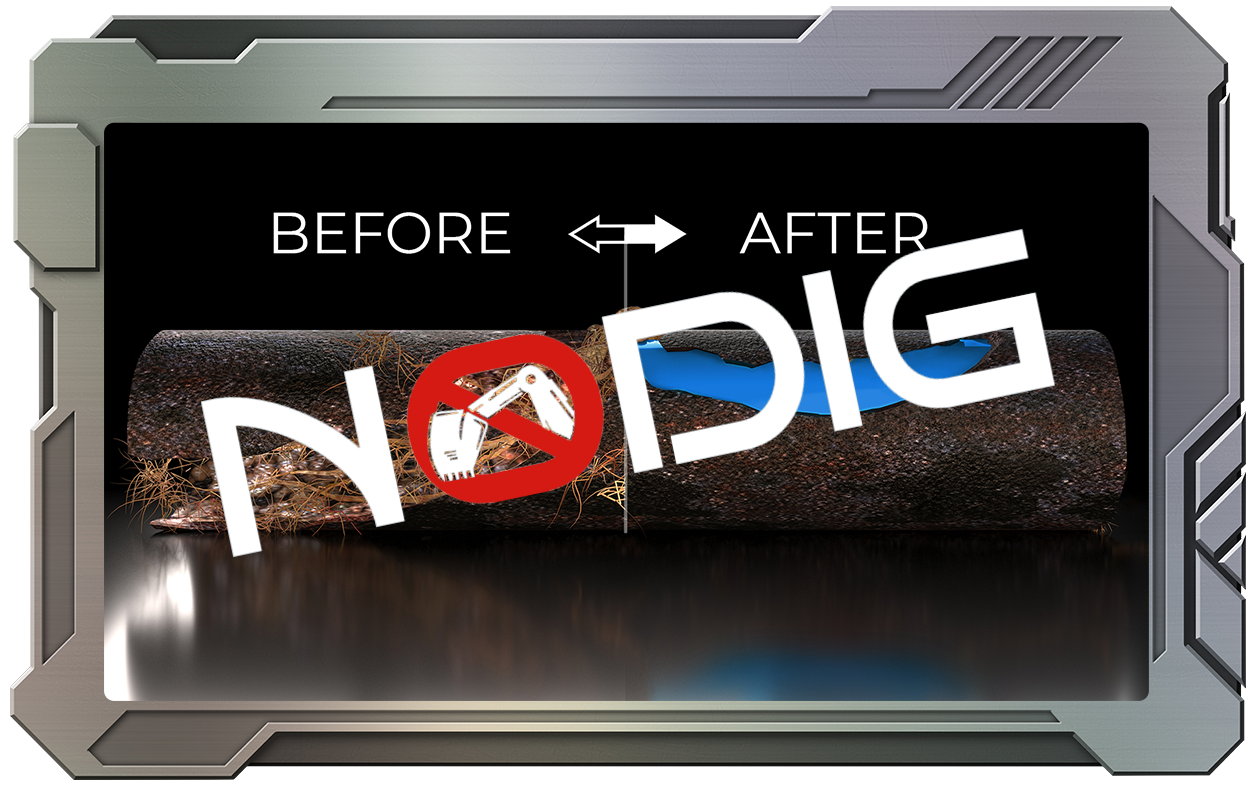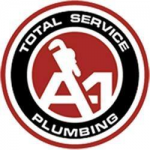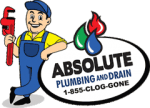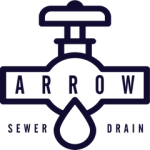A damaged pipeline at home or your work site can be a major inconvenience. Apart from the additional cost, traditional methods for sewer line repair can take days, if not weeks, to finish, haunting your peace.
Fortunately, these days, pipe bursting trenchless technology is made available. This process of repair will not require you to tear up your entire yard.
Licensed plumbers can easily install a replacement pipe for you through pipe bursting.
Read below to learn more about how pipe bursting technology works, its benefits, and FAQs.
What Is Pipe Bursting?
Pipe bursting is the trenchless method of repairing and replacing outdated and damaged sewer lines. It can replace high-density polyethylene, PVC, clay, cast iron, and other types in a just matter of hours.
Pipe bursting is popular these days because it does not require digging. The process replaces the original pipe without disturbing the ground above the sewer line. That means your yard remains intact the whole time.
It works by creating access points on the ends of the existing pipe, then breaking the old pipe when the new fused pipe is pulled through the same path.
This method is best for hard-to-reach places like swamps and marshlands since no excavation is needed.
How Does Pipe Bursting Work?
This trenchless sewer line repair replaces old pipes by creating small entry and exit points above ground.
It then creates a new sewer pipe while bursting the old one as it moves along its existing line through pushing and pulling.
The old pipe is then broken up and directed outwards into the surrounding soil. The new pipe replaces the space used by the old one.
Since this is the case, it is common to exchange pipes of the same size. If you need an upsize, more preparation and additional work will be required.
Check out these 3 crucial steps for a detailed look at how pipe bursting works:
Step 1: Setup
- Sewer Lines Inspection - A high-resolution video camera is first inserted into the sewer pipe to determine the depth and location of the old sewer line and to better assess the sewer problem.
- Machine and Tools Setup - After the sewer line is evaluated, the necessary machines (expander, cutter, rods, power source, etc.) should be installed. The bursting rods are put in place through a flexible guiding rod. This guide allows the bursting rods to be fed into the ground occupying the space of the existing pipe. A power source must also be set up to engage the pushing, pulling, and pipe-breaking later on.
Step 2: Initiation
- Dig Pipe Launch Pit - At the foundation of your sewer, create two small entry and exit points. This receiving pit will be where the new pipe will begin its journey along the old pipe's space. The expander will guide it to fit the space correctly. The cutter will finish it off.
- Pulling of Expander Head - The expander head and the new pipe is pulled into the line through interlocking links that form a chain. These links weigh several hundred pounds. The power source that manages this level of pull work is usually through multiple hydraulic power generators.
- Actual Pipe Bursting - After the expander head has gone its course, the bursting rods and cutting rods break apart the existing pipe and then disperse it into the soil while the new pipe is pulled down into the ground.
Step 3: Completion
- Weld New Pipes with Heat - Welding the new pipes with heat above ground helps avoid sewer line problems like breaks and tree roots in the future.
- Clean-up - Remove all the equipment used and fill in the launch pits dug for the normal activity to resume.
Is Pipe Bursting Safe?
The pipe bursting method is safe. It is preferred by most state and local governments.
Liability-wise, pipe bursting is better than the traditional method that requires digging and excavation. Because you don't need much digging, people are less likely to fall into a trench or cause damage to the surrounding environment.
The Benefits of the Pipe Bursting Method
The pipe bursting method is preferred for its many benefits, from getting the job done in hours to a safer operation.
Here are some more benefits you can experience from pipe bursting:
- Avoids the ground from being dug, preventing the need to replace landscaping, a driveway, sidewalk, or yard
- Minimizes property damage, including underground utilities
- Reduces the risk of injury to laborers
- Long pipe lifespan of up to 100 years
- Increases flow capacity when equal or larger-diameter pipes are dug and installed
- More than 1,000 ft. of pull length can be used
- Most types of existing pipe materials can be burst
- Money saved in minimal repairs and replacement
When Should You Do the Sewer Pipe Bursting Process?
The pipe bursting process can be used in most sewer pipe repair needs. Pipe bursting should be best considered when:
#1 Upsizing Pipe Diameter
Pipe bursting can be used to expand your pipelines, increasing their capacity. Gas and water companies use pipe bursting for a more feasible upgrade on their gas mains, drains, water mains, and sewers.
#2 Replacing Pipes in Big Settings
Many residents will not appreciate construction crews digging around their homes for days. That is if the traditional method is considered.
Pipe bursting is the more efficient way of installing new HDPE pipes throughout heavily populated neighborhoods since laborers don't need to dig a lot.
Contractors need not worry about having to interrupt traffic and moving crowds too.
#3 When Digging Is Not Feasible
There are laws now enforced that prohibit digging trenches in major marshlands, swamps, and specific desert areas.
So trenchless methods with the help of rods, an expander head, and some power supply are the no-brainer choice if you don't want to get penalized.
Pipe bursting also saves big companies the mess of drilling down deep and large trenches that can be unsafe for their workers.
#4 When You Don't Want to Ruin the Lawn
If you have a pipe leaking into your landscaping, things can get inconvenient. It may not be the most practical to dig a trench on your property to find out the source of the problem.
Pipe bursting will help point out the concern and replace the damaged pipes with more durable ones without the thought of redoing the whole lawn afterward.
What Causes the Bursting of Pipes?
Here are common reasons why pipes burst and need a replacement pipe:
- Freezing Weather - As water freezes, pressure builds, eventually bursting the piping.
- Rust and Corrosion - Metal pipes under constant exposure can weaken the pipe walls, joints, and seals leading to their rupture.
- Clogs and Hard Water - These cause higher water pressure, leading to leaks and a damaged sewer line.
- Changing Soil Conditions - When landscaping and construction works are undergoing, soil changes can cause pressure. It has the same effect as any seismic activity.
- Too High Water Pressures - Because water pipes at home are designed to function at a certain level, excess water pressure can cause pipe damage, leaks, and wasted water.
- Accidental Damage - Some renovations or landscaping can unwarrantedly damage your sewer system when not cautious.
- Poor Installation - Pipe replacement performed by someone without training or experience may lead to faulty sewer lines.
Frequently Asked Questions
We've got you covered with more pipe bursting FAQs and answers:
Most pipes installed via the pipe bursting method are made from PVC. PVC has a lifespan of about 50 to 100 years. That means your pipes should at least not bother you for the next 50 years or so.
Pipe bursting can have an estimated cost of $60 to $200 per foot of piping in your property.
Depending on your situation, your total pipe bursting bill can go between $4,500 to $20,000. This is the typical price range for homeowners.
Pipe bursting for city-wide projects, major sewer repairs, and other huge utility repairs will not cost any less than $50,000 in most cases.
The total cost for pipe bursting will depend on the exact circumstances of your sewer line replacement. Some factors affecting the cost include:
- Depth and length of the old pipe
- The gravity of the damage
- Nearby structures built along the property
- Underground utilities nearby the sewer line
- The number of branch connections, off-set joints, and sinkholes
- The slope of the pipe and adjustments needed
- If the neighboring properties are connected to your sewer line
- The type of materials needed for your pipe-bursting project
- Traffic control, public right of way, and permits
- Surface restoration
The total cost for pipe bursting will cover the pipe bursting machine, tools, equipment (expander head, rods, cutter, etc.), permits, repair materials, area repair, and labor.
Final Thoughts
Pipe bursting technology has revolutionized how we can replace and restore our sewers in every capacity. It is safer, easier, and more cost-effective.
If you need a new pipe that won't give you a huge mess or bill, consider pipe bursting and see what a difference it can make.
It's great to be listed on NoDig
-
Join a network of verified sewer repair specialists
-
Get recognized
-
Update your business information
Unlock your listing in minutes.






